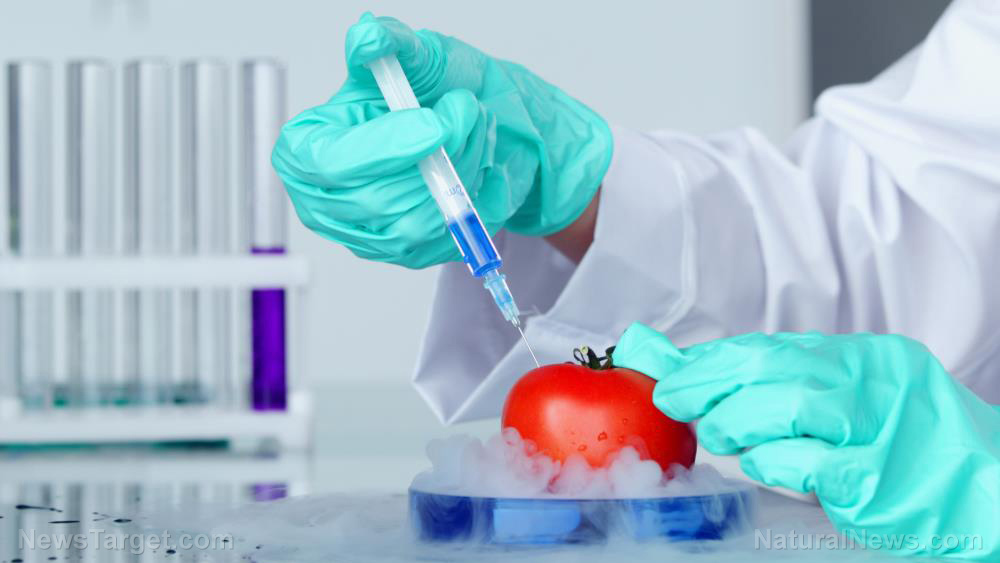Europe is being flooded with hundreds of food products that are contaminated with heavy metals, pesticides, fungus and salmonella
05/17/2024 / By Lance D Johnson

Over the last five years Europe has been flooded with food and spice products that are heavily contaminated with heavy metals, aflatoxins and food borne pathogens like salmonella. The European Union (EU) has intercepted over 400 food products that are heavily contaminated with heavy metals, pesticides, unauthorized substances, adulterated substances, food borne pathogens and fungal growth. The products were intercepted between 2019 and 2024. These products originate either directly from India or come from other countries that imported these products from India. These adulterated products have either been rejected at the border of these European countries or they have been accepted into Europe with an alert notification attached.
Cancer-causing substances proliferate food and spice imports from India
These are substances that either cause cancer or directly harm reproductive health, the kidneys and/or the liver. These imported food products do not list the amount of heavy metals nor do the labels provide any detail on the level of aflatoxins or pesticides, fungicides or herbicides. Food labels do not include things like cadmium and mercury, for example, although these products may be heavily contaminated with these brain damaging and artery-hardening heavy metals.
Among the products intercepted, fish products were most likely to be contaminated with mercury and cadmium. Overall, 21 of the products contained high levels of cadmium, including octopi, calamari, cuttlefish and squid. Cadmium can be fatal if swallowed or inhaled and does significant damage to the kidneys and cardiovascular system. Not only does cadmium raise the risk of cardiovascular and renal disease, but it also builds up in the body and causes bone loss. If these products are consumed over a long period of time, the risk of getting lung cancer goes up.
Another carcinogen found in the products was tricyclazole. This fungicide, banned in the EU, is both carcinogenic and genotoxic. Many rice, herb and spice products contain tricyclazole at levels that are poisonous.
Over 52 of the products on the list contained up to five pesticides or fungicides. While the individual toxicity of these chemicals is certain, the compounding and cumulative effect of these chemicals could pose health risks that are exponentially greater.
Coriander seed powder contained an organophosphate pesticide called chlorpyrifos. This chemical is typically used to kill off foliage and soil-borne insect pests, but it now proliferates the crops that also share the contaminated soil. This is just one of the chemicals associated with neurodevelopmental disorders in children, asthma and damage to the reproductive health.
Of the products listed, 20 of them also contained a hazardous byproduct of ethylene oxide called 2-chloroethanol. Moreover, toxic imidacloprid and monocrotophos pesticides were detected in moringa leaves and pods that were imported from India.
Food imports often contain salmonella and aflatoxins
The adulteration of common import foods was not limited to just toxic chemicals and heavy metals. In fact, at least 100 products – including shatavari, ashwagandha, turmeric, ground onions, coriander, brahmi, papaya and sesame seeds – contained salmonella, an aggressive foodborne pathogen. Dog chew also contained salmonella. Imports of raw peeled shrimp tails were loaded with vibrio vulnificus, a bacterium that causes gastroenteritis, wound infections and septicemia.
Many of the Indian imports also contained high levels of mycotoxins, which are secondary metabolites produced by fungi. One of the most common mycotoxins is aflatoxin, produced by the Aspergillus species of molds. Aflatoxins, which are one of the most overlooked causes of cancer and liver damage, typically contaminate grains, due to the grain’s carbohydrate and sugar content. Aflatoxins are common in antibiotics, cottonseed, cheeses, sorghum, alcoholic beverages, peanuts, sugar, barley and corn, but were prominent in the groundnut kernel, peanuts, chillis and nutcrackers imported from India.
Sources include:
Images.assettype.com [PDF]
Submit a correction >>
Tagged Under:
aflatoxins, cadmium, cancer criminals, chlorpyrifos, dangerous, ethylene oxide, food born pathogens, food police, food safety, food science, food supply, fungicides, genotoxic chemicals, grocery, herbal products, mercury, products, salmonella, toxic ingredients, toxins
This article may contain statements that reflect the opinion of the author
RECENT NEWS & ARTICLES
COPYRIGHT © 2019 Dangerous.News
All content posted on this site is protected under Free Speech. Dangerous.News is not responsible for content written by contributing authors. The information on this site is provided for educational and entertainment purposes only. It is not intended as a substitute for professional advice of any kind. Dangerous.News assumes no responsibility for the use or misuse of this material. All trademarks, registered trademarks and service marks mentioned on this site are the property of their respective owners.




















